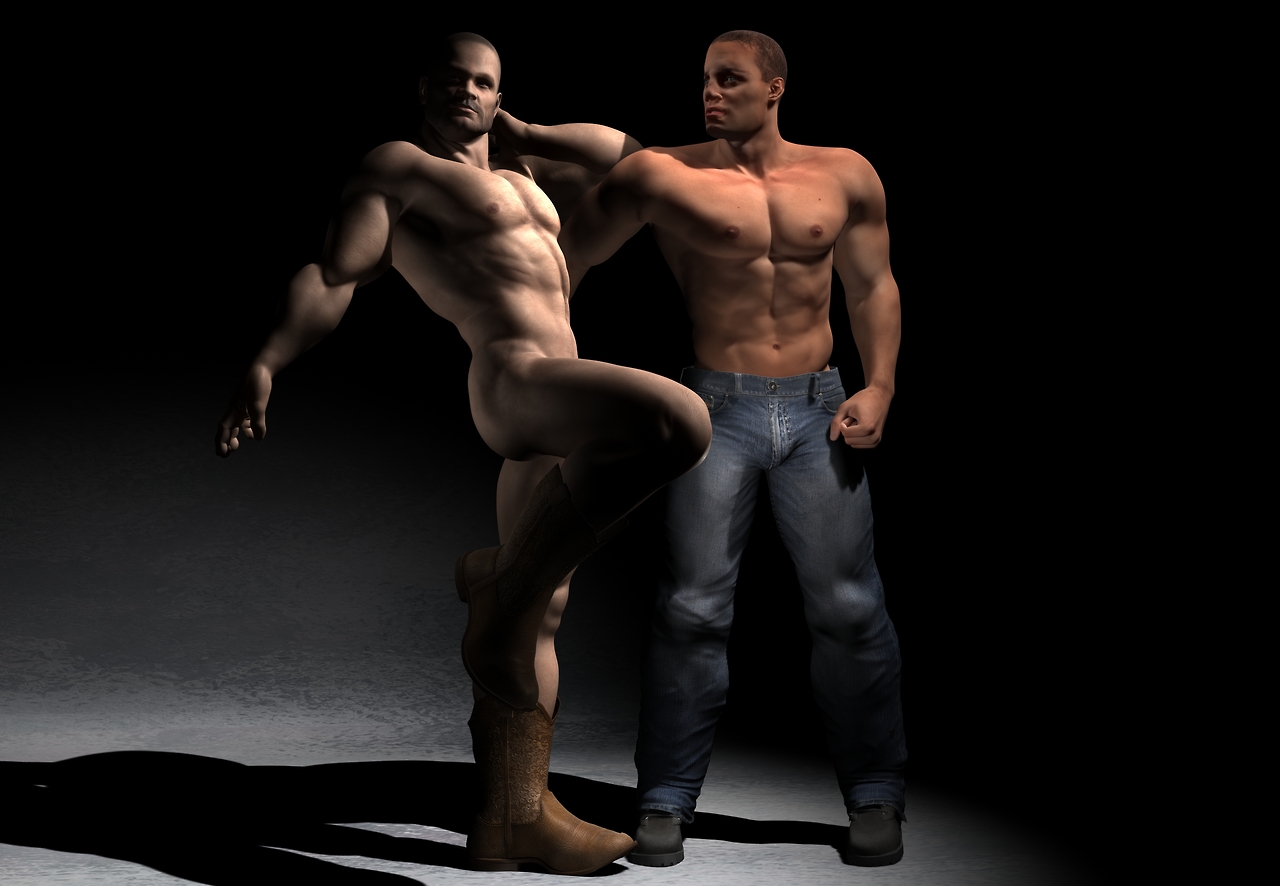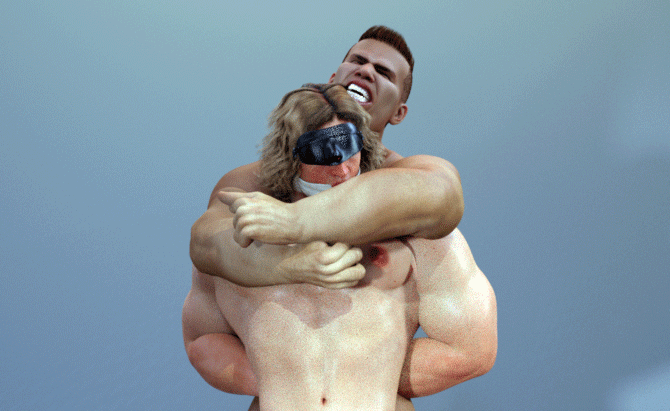You cannot help but notice how Madeira Desouza consistently creates artworks which present a unique and challenging representation of what makes a person masculine. This is because he encourages his viewers to rethink their perceptions and beliefs about masculinity.  bara underground art genre and as is typical of this genre, his artworks are known for featuring hypermasculine (never feminized) men, muscular, aggressive, and sexualized, often in stark contrast to the conventional portrayal of masculinity in mainstream media.
bara underground art genre and as is typical of this genre, his artworks are known for featuring hypermasculine (never feminized) men, muscular, aggressive, and sexualized, often in stark contrast to the conventional portrayal of masculinity in mainstream media.
Madeira Desouza’s art challenges the traditional notions of masculinity as a stoic and dominant force, instead portraying it as complicated, fluid, and at times, unstable.
Masculine Bondage Imagery
One subcategory within masculine imagery is masculine bondage imagery. This subcategory captures a form of eroticism that has been present in gay male culture for many years and has been influences by various cultural and historical factors.

Viewers who are attracted to masculine bondage imagery may have a higher need for control and sensation-seeking compared to those who are not interested in such depictions. Some may also use masculine bondage imagery as a form of self-discovery and self-expression, to explore their sexuality and desires in a safe way.
Masculine bondage images reinforce the highly controversial yet well-known mental construct that pain can provide a man with sexual satisfaction.
In American culture, the meaning of this appears very clearly in Glad to Be Unhappy, a song released in 1936 by Richard Rodgers with lyrics by Lorenz Hart. This song was covered by Frank Sinatra, Billie Holiday and even The Mamas and Papas. The key meaning is located in these lyrics: “…for someone you adore, it’s a pleasure to be sad.”
If you can derive sexual satisfaction from being dominated or from bondage or from physical or emotional cruelty, this concept makes clear sense to you, doesn’t it?